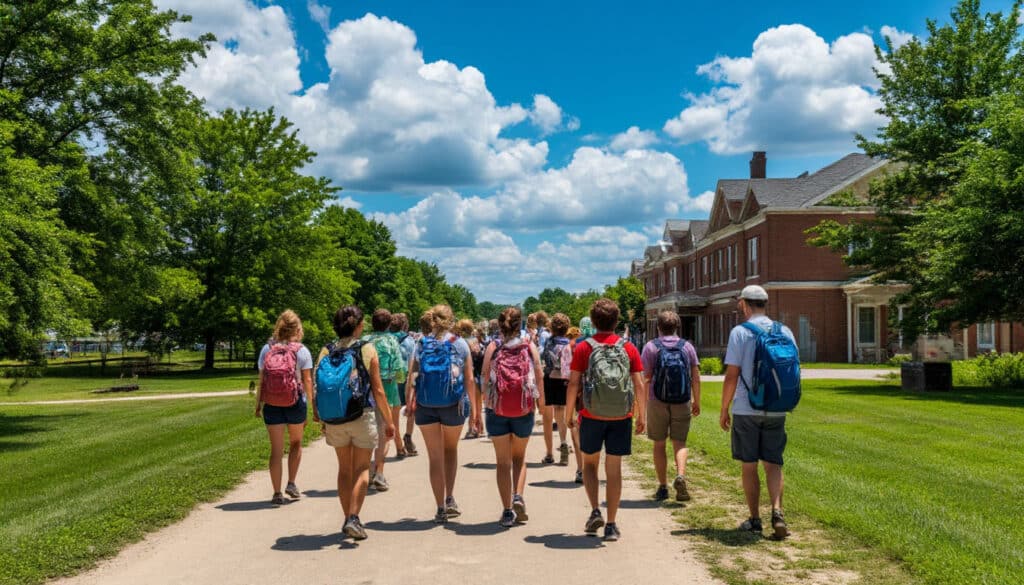Field trips have long been romanticized as the pinnacle of experiential learning—a chance for students to step outside the classroom and engage with the world in ways textbooks can’t replicate. Teachers and administrators often rely on field trips PDF guides to plan these excursions, which tend to emphasize logistics and learning objectives while downplaying the complexities and risks involved. However, beneath the glossy brochures and permission slips lies a web of challenges that educators, students, and institutions must navigate. While the benefits of field trips are well-documented, the disadvantages are equally significant, yet rarely discussed with the depth they deserve. From financial strain to unintended inequities, this article explores the hidden hurdles that transform what should be an enriching experience into a logistical and ethical minefield. Understanding Academic Stress.
One of the most immediate barriers to organizing field trips is the financial burden they impose. Schools already grappling with tight budgets must account for transportation costs, entry fees, insurance, and meals—expenses that add up quickly, even for a single class. For underfunded districts, these costs can be prohibitive, forcing administrators to either cancel trips or shift the financial responsibility onto families. This creates a stark inequity: students from low-income households may be excluded simply because their families cannot afford the additional fees. While some field trips PDF resources suggest generic fundraising ideas, they rarely provide actionable strategies for securing grants or corporate sponsorships, leaving educators to shoulder the stress of balancing educational goals with fiscal realities. The result is a system where only privileged students consistently access these opportunities, exacerbating existing educational disparities. How to Write an Essay.
Logistical Nightmares: The Hidden Workload Behind Field Trips
Beyond the financial strain, field trips introduce significant safety concerns that are often minimized in planning documents. Managing a group of students in an uncontrolled environment—whether a bustling museum, a crowded historical site, or a sprawling nature reserve—carries inherent risks. Accidents, allergic reactions, or even students wandering off are genuine possibilities, and teachers often find themselves unprepared for crisis management. Liability looms large; a single misstep could lead to legal repercussions for the school or district. Many field trips PDF checklists include basic safety tips, such as carrying first-aid kits or verifying emergency contacts, but they seldom address the emotional toll on educators who must remain hyper-vigilant for hours. The pressure to ensure every student’s safety can overshadow the educational goals of the trip, turning what should be a stimulating adventure into a stress-fueled ordeal for staff.
Equity and Inclusion: The Overlooked Barriers to Participation
Logistical challenges further complicate the process. Coordinating transportation, securing permits, collecting parental consent forms, and aligning the trip with academic schedules requires meticulous planning—a task that often falls on already overburdened teachers. Even minor hiccups, like bus delays or venue overbooking, can derail months of preparation. The administrative workload is rarely acknowledged in field trips PDF templates, which tend to oversimplify timelines and responsibilities. For instance, a teacher might spend weeks negotiating with a museum’s education department, only to discover that the venue’s capacity has been reduced due to unforeseen renovations. These disruptions not only waste valuable time but also erode trust between educators, parents, and students when plans collapse at the last minute.
Behavioral Challenges: When Supervision Falls Short
Time constraints represent another underappreciated drawback. Field trips inevitably pull students and teachers away from the classroom, disrupting lesson plans and instructional momentum. A single day-long excursion can create a ripple effect, forcing educators to compress curriculum material or assign catch-up work—a burden that disproportionately affects students who struggle with self-directed learning. While proponents argue that field trips offer “real-world” education, critics question whether the trade-off is justified, particularly when the trip’s academic relevance is tenuous. A visit to a local science center might align neatly with a physics unit, but a poorly planned trip to a generic tourist attraction could feel more like a recreational outing than an educational endeavor. This ambiguity is rarely addressed in field trips PDF guides, which often prioritize enthusiasm over critical evaluation of learning outcomes.
The issue of accessibility further underscores the ethical dilemmas surrounding field trips. Even when costs are covered, physical barriers can exclude students with disabilities. Historic sites lacking ramps or museums without sensory-friendly accommodations inadvertently send a message that some learners are an afterthought. Meanwhile, students with anxiety or neurodivergent traits may find the overwhelming stimuli of crowded venues unbearable, yet their needs are seldom factored into pre-trip planning. While inclusivity is a buzzword in modern education, many field trips PDF resources pay lip service to accessibility without providing concrete steps for vetting venues or collaborating with special education staff. The result is a well-intentioned but exclusionary system that privileges certain learners while marginalizing others.
Behavioral management poses yet another challenge. Even the most disciplined students may test boundaries in unfamiliar settings, and chaperones—often parent volunteers—are rarely trained to handle conflicts or emergencies. A student’s impulsive decision to wander off or engage in risky behavior can escalate quickly, diverting attention from the trip’s educational purpose. Teachers, already stretched thin, must balance their role as educators with the demands of crowd control, leaving little room for meaningful engagement with the material. The social dynamics of field trips can also amplify cliques or bullying, as students group together in ways that exclude peers, undermining the collaborative spirit these trips are meant to foster.
Weather and other unpredictable factors add another layer of vulnerability. Outdoor excursions, such as ecological hikes or historical walking tours, hinge on ideal conditions. A sudden rainstorm or heatwave can force cancellations, leaving educators scrambling to salvage the day with improvised indoor activities. While some field trips PDF guides recommend “backup plans,” they rarely account for the emotional letdown students experience when eagerly anticipated events are canceled—or the logistical nightmare of rescheduling buses and venues. Standout MBA Dissertation.
Finally, assessing the educational impact of field trips remains an elusive goal. Traditional assessment tools, like quizzes or essays, fail to capture the nuanced benefits of experiential learning. Did the trip inspire a lifelong interest in art? Did it deepen students’ understanding of historical events? Without robust evaluation frameworks, educators struggle to justify the time and resources invested. Many field trips PDF resources omit post-trip reflection exercises or feedback mechanisms, leaving teachers without data to refine future excursions.
In conclusion, while field trips undeniably offer unique learning opportunities, their disadvantages demand honest scrutiny. The rosy portrayals found in many field trips PDF guides obscure the financial, logistical, and ethical challenges that educators face. To truly maximize the value of these experiences, schools must adopt a more critical approach—one that prioritizes equity, safety, and clear learning goals. By addressing these pitfalls head-on, educators can transform field trips from chaotic gambles into intentional, inclusive, and impactful extensions of classroom learning.














